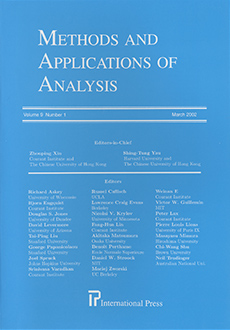Abstract
In this article, we are interested in the behavior of the FENE (Finitely Extensible Non-Linear Elastic), a constitutive relation within an almost shear flow. As this relation results from a microscopic analysis of the polymer chains, the study presented here is based on new results from the Fokker-Planck equation. Thin flows are generally considered like almost one-dimensional flows and almost shear flows. The study of the FENE model makes it possible to understand which could be the dominant terms in the equations coupling this rheology (the FENE model) and the hydrodynamic (via the conservation equations). Some possible examples of applications are given at the end of this article, for example, in the field of lubrication, the phenomena of boundary layers, the industry of the nanotechnology, biology or Shallow-Water equations.
Citation
Laurent Chupin. "The FENE Model for Viscoelastic Thin Film Flows." Methods Appl. Anal. 16 (2) 217 - 262, June 2009.
Information





